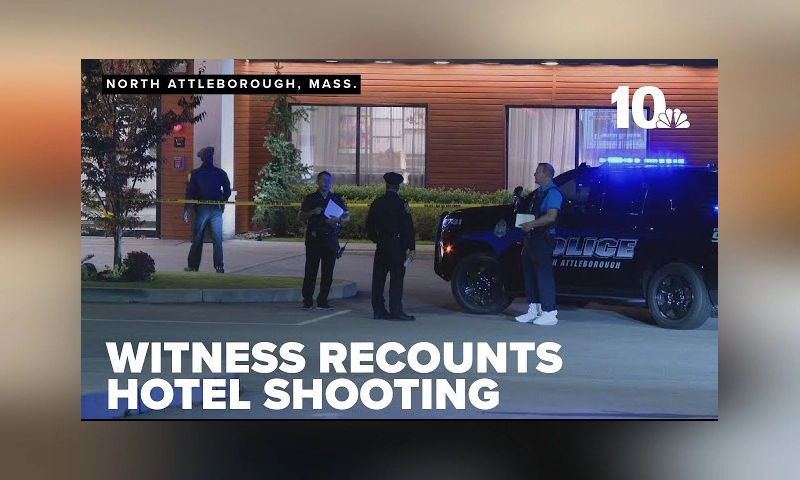When an emergency occurs at or near your hotel, being prepared with knowledge and tools will ensure that you are ready.
For many, church is a sanctuary — a place of worship, community, and peace. Last week, in Detroit, this peace was shattered by a gunman who drove into a local church and began shooting shortly after the Sunday morning service had begun. A potential mass tragedy narrowly avoided thanks to the quick and heroic actions of the staff.
Unfortunately, violent incidents like this are not isolated. If anything, the number of active shooter scenarios is on an alarmingly high long-term trajectory. The FBI reports that the 2020–2024 period saw a 70% increase in incidents compared to the previous five-year span. According to Mass Shooting Tracker – a database of U.S. mass shootings that defines “mass shooting” as a single outburst of violence in which four or more people are shot – there have been 221 mass shootings so far this year.
Hotel rooms are especially vulnerable to violence because of their public access. A deadly shooting at the Bellagio fountains in Las Vegas left two people dead earlier this month while being broadcast live on YouTube. In Atlanta, a man armed with multiple weapons fired at least 15 rounds from a Four Seasons balcony during a standoff, and in Minnesota, a hotel clerk was killed in an active shooter incident — tragic reminders of the real dangers hotels can face.
Hotels have an ethical and legal duty to protect their employees and guests. It is important to develop crisis and active shooter plans and train staff on how to react quickly, protect themselves and ensure guest security.
How can hotels, and other public places, take proactive and meaningful steps to create an environment of safety and be prepared for such emergency situations?
1. Change from Reactive Measures towards Proactive Preparedness
What is the first step to fostering a culture of proactive safety? Recognizing risks before they occur.
Hotels tend to focus more on reactive measures, i.e. responding after an incident occurs, than they do on prevention. But the reality is, true emergency preparedness isn’t just a box to check – it’s a mindset/culture shift across the organization. To build a proactive preparedness program, it is important to identify potential vulnerabilities. Then create clear and actionable protocols that address these issues.
It is important to equip staff with the necessary knowledge and tools to be able to react effectively to high-pressure situations.
Mobile-first emergency preparedness tools In this context, these platforms are particularly important as they enable staff to access vital information and resources in real-time. Active shooter scenarios are often characterized by high levels of anxiety and tension. This requires tools to facilitate instant and discrete communication, access to emergency routes and safety resources as well as location tracking and mapping.
By investing into modern preparedness and cultivating an environment where safety is prioritized organizations empower their team to take decisive actions before a situation escalates. They save precious seconds in a world when every second counts.
2. Get Your Staff Fully Trained
Knowledge is power. This is especially true in situations with high stakes. The most critical component of preparedness is providing your team with comprehensive emergency response protocols training. OSHA also requires that if you employ more than 10 people, you must have an Emergency Action Plan.
OSHA currently does not require EAPs include an active shooter protocol. However, both DHS and OSHA recommend incorporating workplace violence and response procedures to active shooters as part of the overall emergency preparedness plan.
The training must include clear, detailed instructions for how to deal with threats of violence. This will ensure that the staff knows what to say and do in a time of crisis. And don’t forget – training doesn’t have to be (nor should it be) overwhelming or complicated. Emergency preparedness tools are not only designed to make it easy for staff to learn, retain, and execute protocols, they also exist to keep teams accountable by logging training progress and documenting/analyzing scenario response.
3. Implement technology that simplifies the de-escalation process
In active shooter situations, de-escalation can help prevent violence from increasing. The technology plays an important role in this field, providing clear instructions and audio guides if necessary. These tools protect both guests and employees, and reinforce the sense of calmness during an emergency.
4. Exercises and simulations should be conducted regularly
True preparedness is a result of preparation and practice. Regular drills and simulators allow for safety protocols to be not only theoretical, but embedded in the daily operations and procedures of a property. They also help identify any gaps and enable necessary adjustments.
The mobile emergency preparedness solution is designed to be easy to use for staff by integrating training modules and scenarios. It allows staff to practice responses in a controlled, safe environment. They can become more familiar with emergency protocols and improve their effectiveness in responding to actual scenarios.
5. Prioritize Wellness Resources After an Incident
Violence can be traumatic and leave a lasting psychological and emotional scar on everyone involved. Mental health and wellness are important but often overlooked components of emergency preparedness.
Prioritizing recovery and post-incident treatment not only supports the well-being of their team, but also builds trust and loyalty among guests and employees. This commitment to the recovery of the organization shows that safety is not just about the immediate crisis but also includes the long-term wellbeing of the employees and guests.
The Hospitality Industry Has a Responsibility It Can’t Ignore
It’s been said before and it will be repeated again: emergency preparedness is not a subject for awards. Active shooter incidents are on the rise, and proactive safety measures will be required to combat this threat. modern preparedness technology The hospitality industry is booming.
No longer is it optional to build a proactive safety-culture that emphasizes prevention, equips employees with training and equipment, and supports recovery. It is both a moral obligation and a necessity for business.
You should take immediate action to reduce the risks to your property and to prevent violent situations.
About the Author

Vanessa G. Osbourne Smart Emergency Solutions LLC is her company, and she’s its CEO. She leads the development of new safety technologies in the hospitality sector. Vanessa, who is known as a problem-solving specialist, was Senior Manager, Technology Enterprise Data Architecture for Shell. Her safety protocols prevented chemical incidents, and her daily operating value savings were $3M.
Vanessa’s 15+ year leadership experience with global organizations such as Baker Hughes, Hewlett-Packard and others brings a wealth of technical expertise in hospitality safety challenges. She has received numerous awards, including the Failure Analysis – Problem Solver Achievement Award and the Black Engineer Award for Excellence.
Vanessa has an engineering degree from Oakland University and a master’s degree from Dallas Theological Seminary. She is also certified as an AWS Solutions Architect, Six Sigma Lean Professional, and Six Sigma Lean Professional. She is a member of the Lanterns for Light Foundation board and mentors many women working in the technology industry.
Smart Hotel Manager is her flagship innovation. It transforms emergency preparedness in hotels through technology that was developed with industry leaders.


